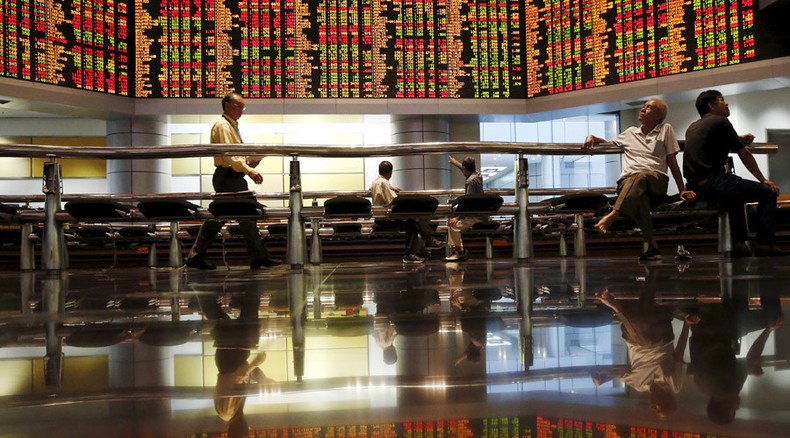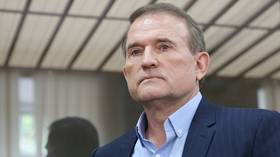Global stocks surge as China cuts interest rates

The People’s Bank of China has lowered its interest rate for the fifth time since November boosting European and US stocks higher in Tuesday's trading. The one-year lending rate has been reduced by 25 basis points to 4.6 percent, which is record low for China.
China's interest rate move is its fifth cut this year, after a long period of stability http://t.co/ke1kXAAoEEpic.twitter.com/zLlYpMJtaL
— Bloomberg Business (@business) 25 августа 2015The decision by the central bank immediately sent European stocks higher. London’s FTSE is up over 2 percent, the German DAX and France's CAC are gaining 4.5 percent and Russia's RTS is almost 5 percent higher as of 15:00 GMT.
Wall Street opened in positive territory on news from China. The Dow Jones Industrials and the S&P 500 were up over 2 percent, while the Nasdaq was 3 percent higher at opening bell.
U.S. stocks surge at the opening; Dow up 350 points, Nasdaq up 3 percent http://t.co/GyDBjDYUNSpic.twitter.com/aajtOiwTmt
— Bloomberg Markets (@markets) 25 августа 2015Oil prices have also rebounded from Monday’s lows. Brent crude is trading 2 percent higher at $43.52 per barrel, while US benchmark WTI is up 3 percent, trying to get back up to $40 per barrel as of 15:30 GMT.
The rate cut comes on the heels of the biggest four-day nosedive by the key Shanghai Composite Index in the last 20 years. Chinese stocks have lost 22 percent since August 19.
Liu Li-Gang, China economist at ANZ Bank in Hong Kong says that the move from Beijing was aimed more at the real economy.
"Although this has some elements of giving comfort to the market, this is more about giving a real boost to the real economy so the government can continue to have its seven percent growth rate fulfilled," the economist told Reuters.
READ MORE: Chinese markets crash again in biggest collapse in 20 years
The one-year deposit rate has been cut by 25 basis points to 1.75 percent. The change comes into force on Wednesday.
According to China's Central Bank the decision was to cut "the social cost of financing to promote and support the sustainable and healthy developments of the real economy.”
LISTEN MORE:













